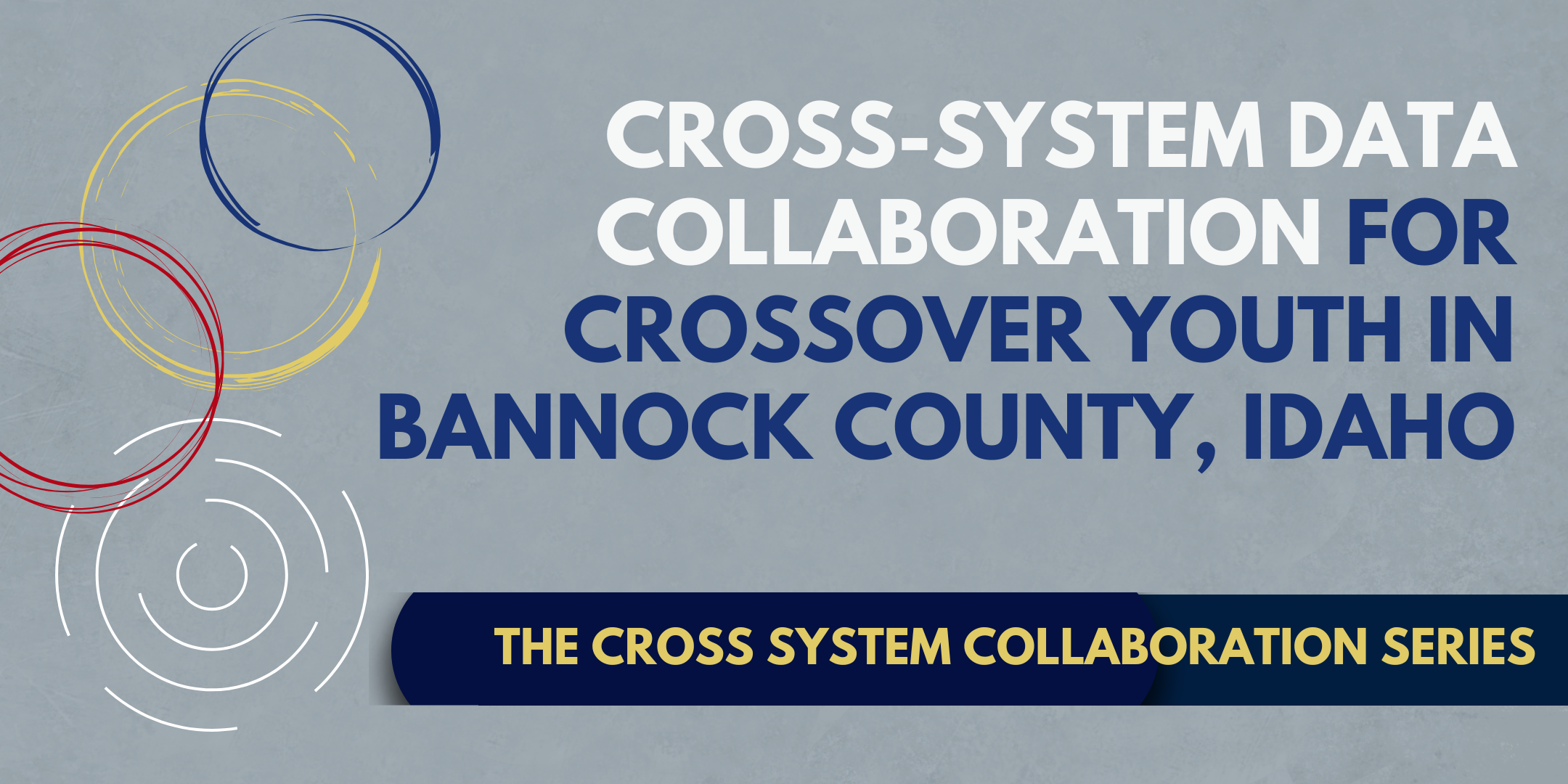Cross-System Data Collaboration for Crossover Youth in Bannock County, Idaho

Introduction to Bannock County, Idaho
Bannock County, located in southeastern Idaho, is the state’s sixth most populous county, with just over 90,000 residents. Home to the city of Pocatello, it serves as a regional hub. Like many jurisdictions, Bannock County faced challenges in coordinating services for crossover youth—those involved in both the child welfare and youth justice systems. Over the past decade, however, the county has built a collaborative, data-inclusive approach to improve outcomes for these young people.
Background: The 2014 Capstone Project & Center Collaboration
In 2014, a team from Idaho participated in our Multi-System Integration Certificate Program, launching a Capstone Project focused on crossover youth. The team reviewed a small sample of dually involved youth case files, identifying systemic gaps and opportunities for better collaboration across child welfare, youth justice, and the courts. This work laid the foundation for Bannock County’s current model, which emphasizes strategic data sharing, early intervention, and cross-system protocols.
Defining Crossover Youth & Prevention Cases
Bannock County defines crossover youth as those with any level of concurrent involvement in both child welfare (e.g., voluntary, protective supervision, in custody) and youth justice systems (e.g., diversion, probation, detention). Additionally, the county identifies prevention cases—youth at risk of involvement in both systems—through Rule 16 screenings, which allows stakeholders to assess family needs and coordinate intervention plans without requiring a formal investigation of a second system. Some indicators that may trigger a Rule 16 screening include suspicion of neglect, instability in the home, or general delinquent behaviors. This proactive, collaborative process supports early resource alignment and prevents deeper system involvement.
Data Sharing Structure: Simplicity & Accessibility
Rather than relying on complex systems, Bannock County uses shared Excel spreadsheets and Microsoft Forms to track crossover cases. The dedicated crossover probation officer collects Juvenile Probation data and shares this information with a designated child welfare staff member who compiles it with Health and Welfare’s data on the same cases. Initial data collected at the point of crossover includes factors like referral dates, charges, and living situation. Data is reviewed at 6, 12, and 18 months to track outcomes like recidivism, substance use, education stability, and pro-social supports. While Microsoft Forms has limitations (e.g., data entry errors cannot be edited), this low-tech approach is transparent, accessible, and sustainable for local use.
Prioritizing Data Accuracy and Shared Understanding
Accurate data collection and interpretation are critical to effective system change. In Idaho, terminology that differs across agencies and counties have posed challenges. For example, the term “informal adjustment” may mean probation in one county and diversion in another. To address this issue, Bannock County emphasizes the importance of involving researchers early in the process, ensuring they understand system nuances before interpreting the data. A collaborative approach, where external analysts work closely with local stakeholders to define terms and validate findings, can enhance the accuracy and usefulness of data-driven decision-making.
Another barrier to accuracy is high staff turnover. New staff may lack the training/understanding or time needed to enter data consistently. Bannock County suggested that assigning a dedicated team or staff person to manage crossover cases can improve data reliability by fostering accountability and continuity. Without shared definitions and adequately trained personnel, data risks being misinterpreted, undermining both analysis and action.
Simplifying Data Collection for Greater Impact
Initially, Bannock County tracked over 120 data points per youth—an approach that proved unsustainable. They refined their focus to approximately 80 high-value indicators, guided by central questions: “What do we need to know? Why do we need it? and How will it be used?”
To organize their efforts, the team categorized indicators into two groups:
- Process measures that help determine whether interventions are being implemented correctly (i.e., in accordance with their protocol);
- Outcome measures that assess their impact on youth trajectories across child welfare and youth justice.
This approach allows the team to distinguish between implementation issues and ineffective strategies. Equally important, they prioritized transparency with frontline staff. When practitioners understand how data informs decisions and improves services, they are more likely to collect and use it accurately. Bannock County’s experience reinforces a key lesson:
simplifying data collection isn’t about doing less—it’s about doing what matters most.
Defining and Measuring Success
Bannock County leaders are intentional about measuring both immediate and long-term success. They focus not only on whether youth re-offend, but whether the severity of offenses decreases and connections to supportive networks increase. Sample outcome indicators include:
- Recidivism (e.g., fewer new charges)
- Length of system involvement (e.g., reduced time in congregate care)
- Placement stability (e.g., fewer foster care moves)
- Amount of pro-social support (e.g., larger circle of caring adults/positive role models)
Sustaining Momentum
The team launched its Crossover Youth Practice Model (CYPM) protocols and trainings in February 2020—just before the COVID-19 pandemic disrupted operations nationwide. Despite the challenges, they remain committed. The team has since adapted their approach, continued meeting, and refined protocols to maintain progress.
Key Recommendations for Other Jurisdictions
- Start small but plan for long-term. Pilot with a dedicated team before expanding data collection.
- Prioritize prevention. Use mechanisms like Idaho’s Rule 16 to coordinate early interventions.
- Simplify data collection. Focus on metrics that drive decisions.
- Establish clear definitions. Ensure key terms are well-defined and consistently communicated across partners.
- Engage evaluators early. Align on expectations, methods, and definitions from the outset.
- Quantify and track both process and outcomes. Evaluate whether interventions are implemented as designed, and whether they achieve desired results.
- Stay at the table. Consistency, especially during staff turnover or crises, is key to sustainable system change.
Want to learn more? Reach out to Dr. Alex Miller (am4020@georgetown.edu) for resources on crossover youth data-sharing models.
